Zenga Zengana: strawberry flavored with pineapple
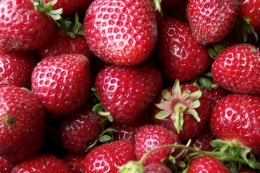
The Zenga Zengana garden strawberry has a long history. The goal of the work of German breeders was to obtain berries for industrial processing and deep freezing; they achieved results in the middle of the last century. By crossing Markee and Sieger, we got a popular one that is still popular today. variety Senga Sengana. It has been valued by gardeners in Europe and Russia for many years for its rich harvests of berries with the classic strawberry flavor.
Content:
- Description of the variety
- Benefits of Strawberry Zenga Zengana
- How to grow and care
- Prevention of strawberry diseases
Description of the variety
The variety is mid-season. The bushes are strong, tall, compact in shape. There are a lot of leaves. The color of the leaf blades is dark green. Size is medium. Peduncles are short, not higher than the level of the leaves. Forms few mustaches. In one place it retains productivity for up to 6 years.
The shape of the fruit is round-conical, widening at the stalk, heterogeneous. Average weight is about 10g. The first berries are always larger and can weigh up to 30g. Yields are high. One bush produces 1.5 kg of berries, about 4 kg per square meter.
The color of the fruit is red, dark red when ripe. The pulp is dense, contains the optimal amount of juice and dry substances, and is suitable for freezing and all types of processing. Sweet and sour taste, with a strong aroma.
The fruits are separated from the stalk well. It begins to bloom in May. The first berries will ripen in mid-June. The variety is characterized by extended ripening, lasting about a month. In cold, rainy summers, gray rot can affect the crop.The variety is susceptible to leaf spot. The main pest is the strawberry mite. Has immunity to a number of diseases. Not scary:
- verticulosis
- powdery mildew
- rhizoctoniasis
- root blight
Bushes strawberries Low temperatures (-24°) are tolerated well. Especially in snowy winters. They can recover after frost damage. Heat and drought affect the quality of the crop. It tolerates transportation relatively well. It is recommended to grow for homemade preparations. Compote and jelly made from Zenga Zengan berries have excellent taste.
Benefits of Strawberry Zenga Zengana
The characteristics of the variety determine its popularity over time. List of main advantages:
- Yield indicator is good 1.5 kg of fruits per plant
- winter hardiness (-24°)
- adapts well to weather conditions
- high immunity to root pathogens
- taste rated 5 points
- bears fruit for 6 years on one plantation
- has ideal properties for quick freezing
- tolerates transportation satisfactorily
- can be used for industrial cultivation
How to grow and care
Strawberries will grow on the ridge for at least 6 years. The correct choice of location largely determines the future productivity of the plantation. Site requirements:
- lack of shade during daylight hours
- location in the southern or central part of the garden (vegetable garden)
- no draft
- light, fertile soil
Landing
plant, strawberry seedlings should be planted in the spring, and the beds should be prepared in the fall. It is good to dig up the area. Select weed roots and debris from other plants. To improve soil structure and increase fertility, add per square meter:
- humus – 0.5 buckets
- superphosphate – 2 tbsp. l.
- potassium fertilizer – 1 tbsp. l.
- wood ash – 1 cup
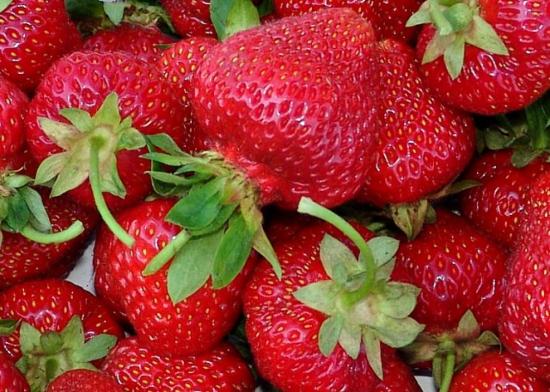
Tall bushes will require ample space. Recommended planting schemes:
- one-liner
- two-line
One-line diagram: outline the rows. Make row spacing 0.7 m apart. Dig shallow holes (12 cm) along the row at intervals of 0.2 m. Two-line scheme: lines are spaced 0.30 m apart, distance between holes is 0.20 m. Row spacing is at least 0.7 m.
Strawberries Zenga Zengana often suffer from gray rot. The disease can be avoided if you buy black PVC film and cover the soil between the rows. It is recommended to lay straw on the surface of the film to prevent overheating of the roots on hot summer days.
Plant another variety of late strawberries next to the Zenga Zengan plot. This is necessary for pollination. When planting, do not bury the central bud. Place the roots in the hole without bending. Landings spill, cover the soil under the bushes with a layer of mulch.
Caring for strawberries in spring and summer
Regular watering is the main part of care. The weather determines the frequency and volume. In hot summers with moderate rainfall, water every week. Watering carried out in the morning is favorable. Drip irrigation is optimal. Water does not fall on the leaves of the plant and evenly moistens the soil.
Fertilizers are no less important than watering; when applying, follow the following scheme:
- Apply fertilizer for the first time in early spring.
- Clear the soil of last year's mulch, spread urea or other nitrogen fertilizer, and loosen the soil.
- The appearance of leaves is a signal for the second feeding.
You will need organic matter. Prepare an infusion of mullein and ammonium sulfate. Before applying fertilizer, water the beds with water. The third feeding is needed before flowering. To prepare the solution you will need potassium sulfate or nitroammophoska. The fourth feeding is at the end of July, when the crop has already been harvested.Water the ridges with an infusion of wood ash.
Prevention of strawberry diseases
Better to spend time on prevention diseasesthan to lose the harvest. The main enemies of strawberries:
- gray rot
- leaf spot
- strawberry mite
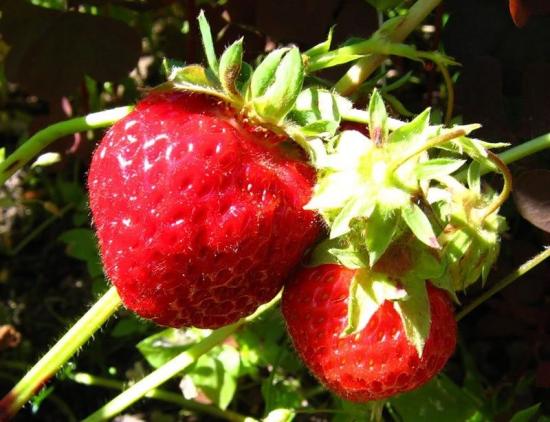
Disease prevention means proper care of strawberry beds. Operating schedule:
- early spring – treatment with fungicides
- all season – removal of diseased, damaged bushes, leaves
- weed removal
- fertilization
- late autumn – treatment with fungicides
Gray rot
Signs of gray rot: gray or brown spots on berries and leaves. The disease is caused by a fungal infection. The following drugs have proven themselves in the fight against the causative agent of the disease:
- switch
- topsin M
- derosal
- Bordeaux mixture (1%)
Spraying solution helps:
- water – 10 l.
- ash – 1 tbsp.
- chalk – 1 tbsp.
- copper sulfate – 1 tsp
Leaf spot
A fungal disease - leaf spotting, leads to a decrease in yield, affects parts of the plant: stalk, stems, leaves. Treatment Bordeaux mixture (1%) will help prevent infection. Spraying scheme:
- first treatment - early spring
- second treatment - before flowering
- third treatment – the fruiting period is over, the berries are picked
Strawberry mite
Karbofos and colloidal sulfur are the most effective means of pest control. So, experience gardeners think. According to gardeners, the variety does not require much time to maintain. Weather conditions do not affect the harvest. The taste of preparations made from Zenga Zengan berries will satisfy even a gourmet.
Video about strawberries "Zenga Zengana"


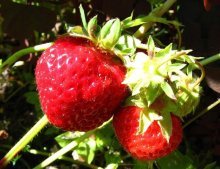
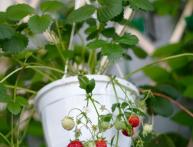



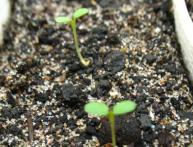

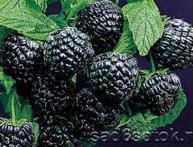
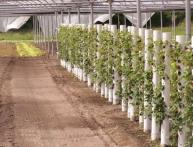
Comments
It is indeed a very pleasant-tasting berry, but to get a good harvest of this variety in our region you have to tinker a lot with watering and selecting fertilizer.Regarding the aroma of pineapple, this is probably true, I’m just not very familiar with its smell.
If I’m not mistaken, I bought this type of strawberry at the market, it was very tasty and I remember it well, I’ve thought about planting it more than once. In terms of taste, it is incomparable.
I have never known anything about this variety. It’s just super wonderful and produces up to 1.5 kg of berries from one bush and is frost-resistant and begins to bloom in May. And judging by previous comments, it’s also very tasty. You'll have to search